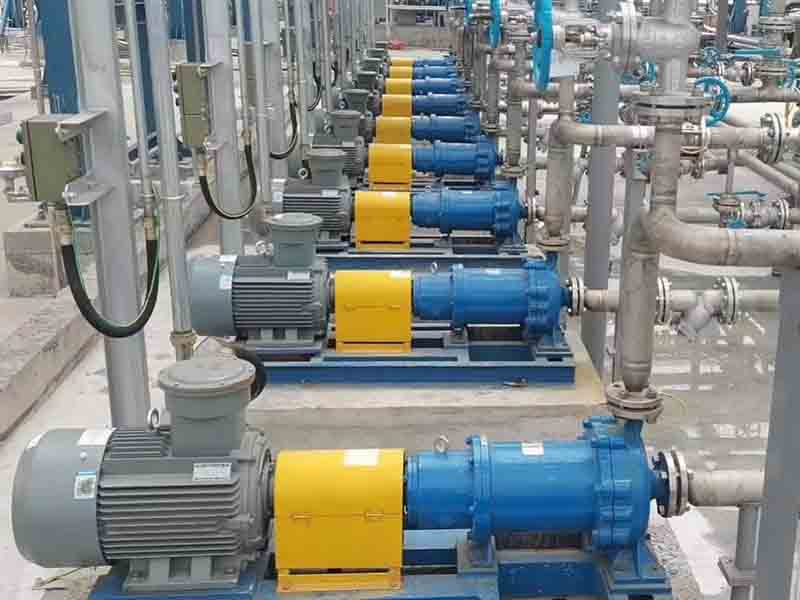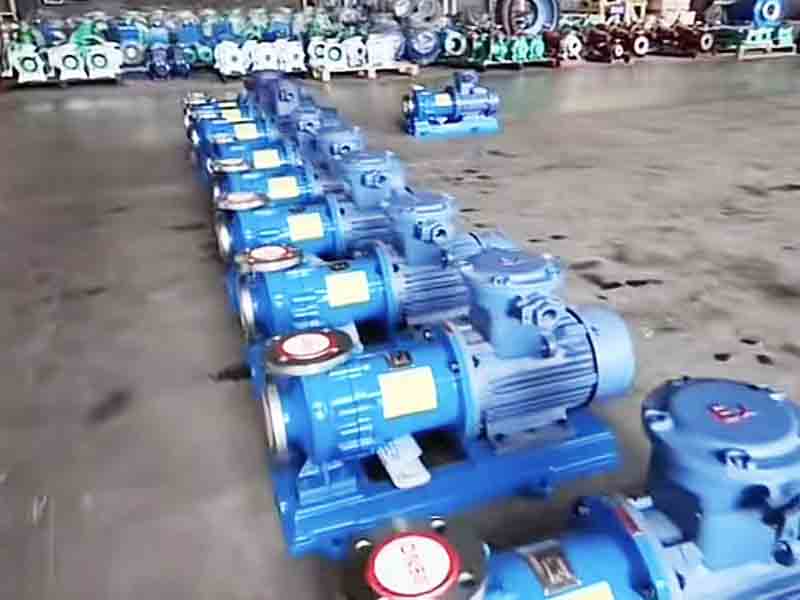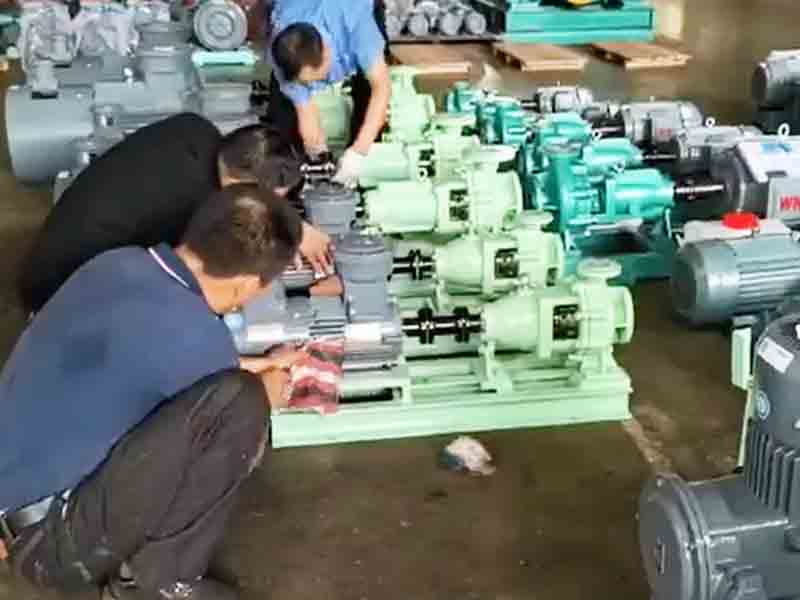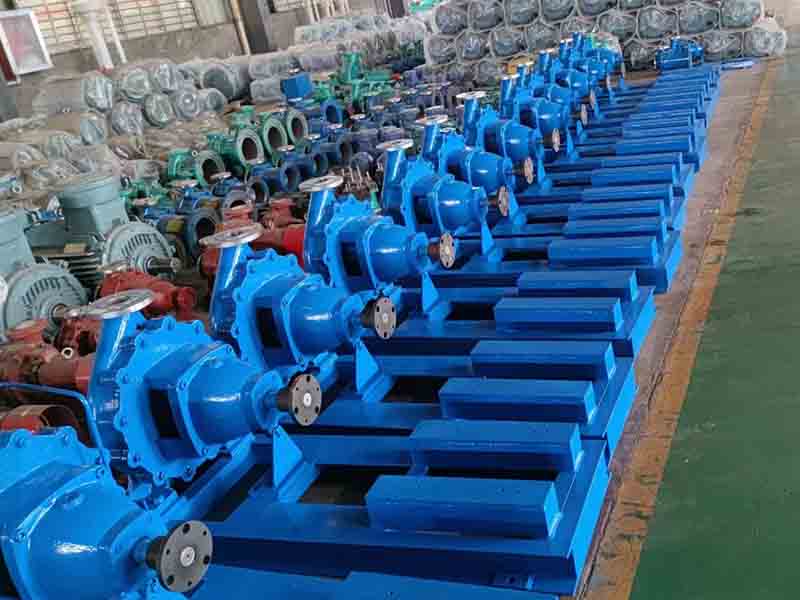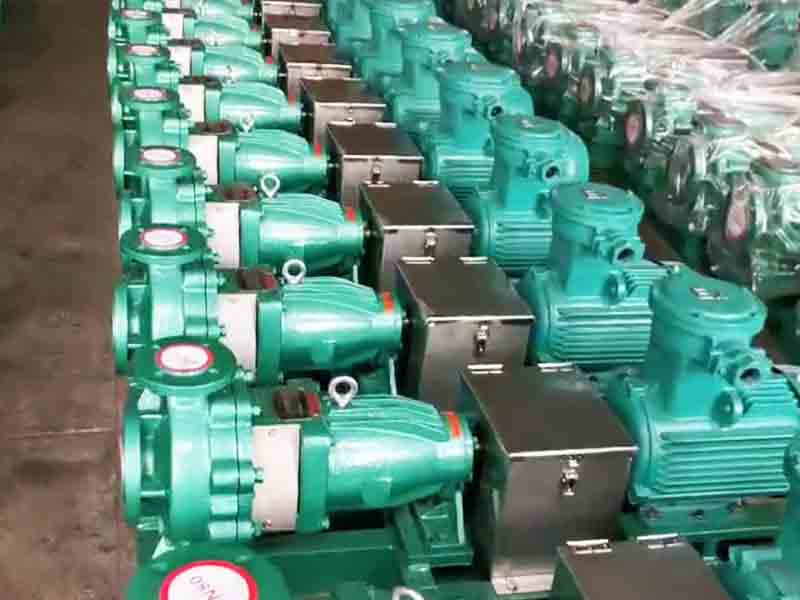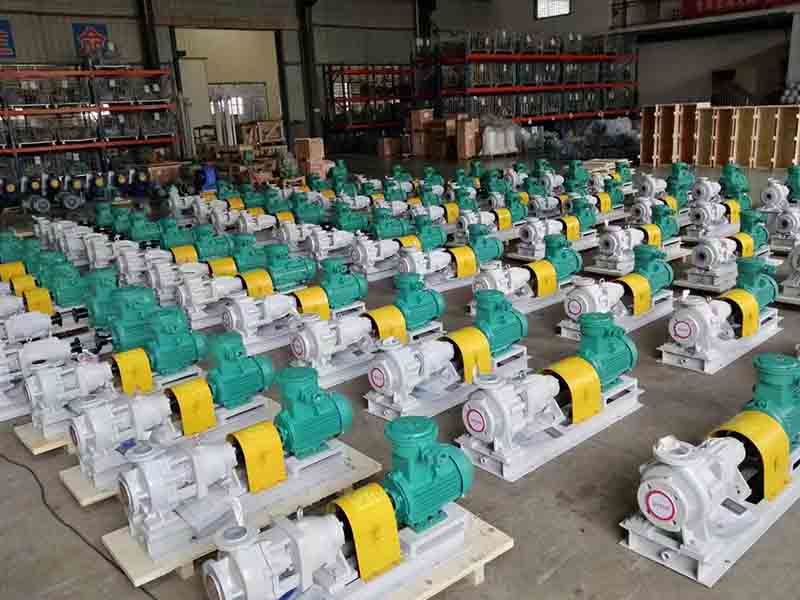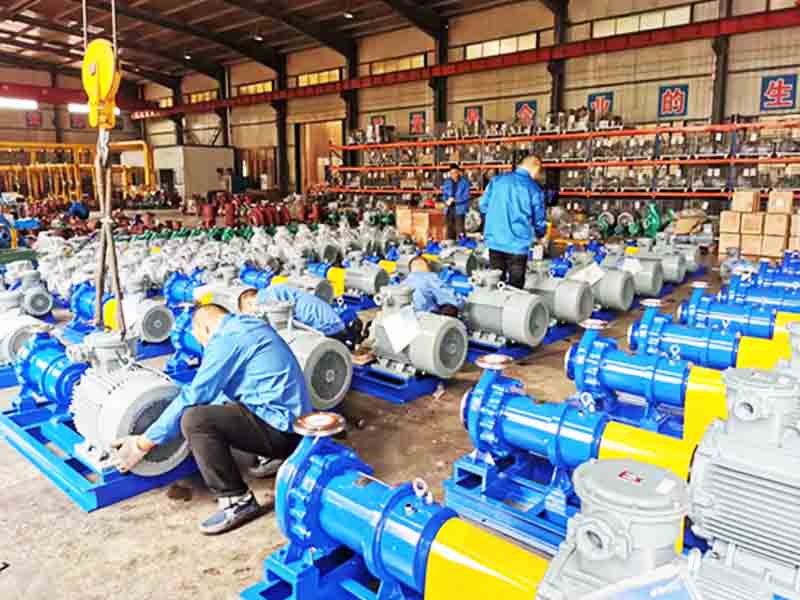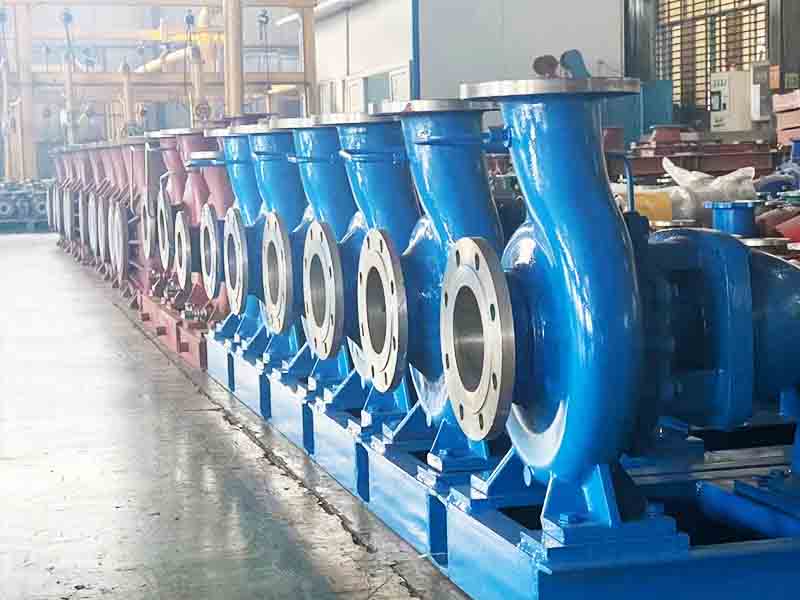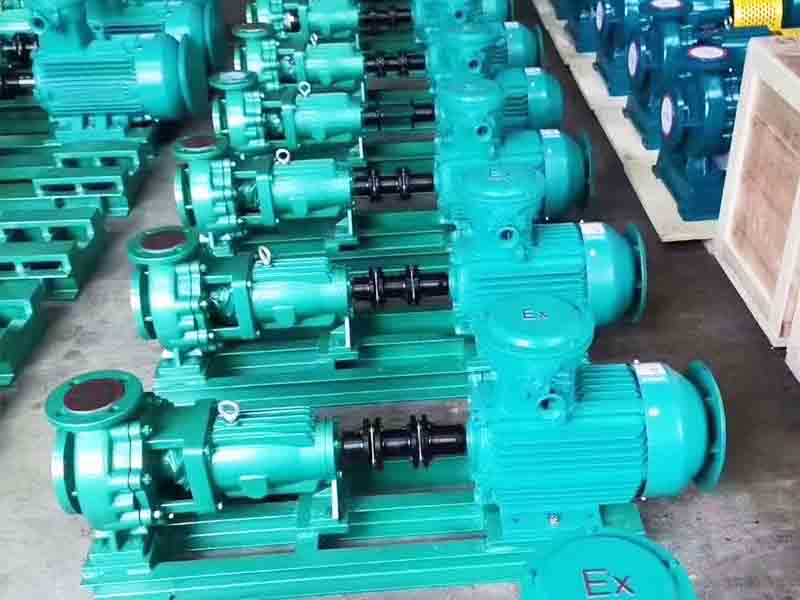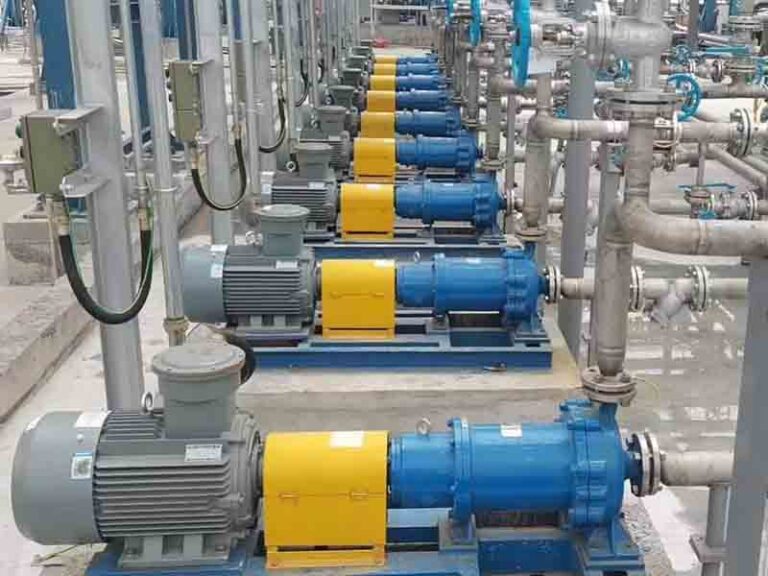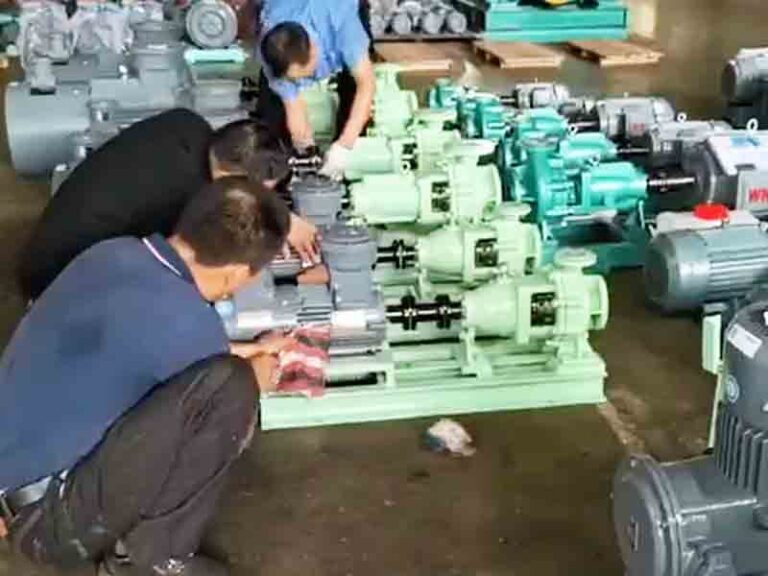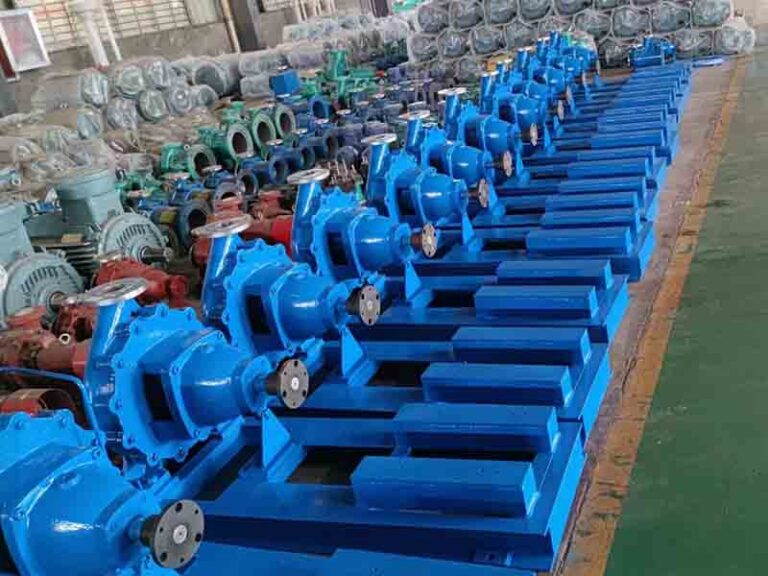In modern industrial production and many scenes of life, fluid transportation is an indispensable link, and horizontal pumps as the key equipment in this field, plays a vital role. This article will be a comprehensive analysis of the horizontal pump, to bring you a deep understanding of this widely used machinery and equipment.
What is a Horizontal Pump
Horizontal pumps are one of the most widely used pump designs, which are usually manufactured according to DIN24255/EN733 standard. This standard regulates the inlet and outlet flange dimensions of pumps, making them interchangeable between different brands of horizontal centrifugal pumps. However, even within the standardized DIN 24255/EN 733 horizontal pumps, there may be slight differences in overall dimensions and performance.
Principle of operation of horizontal pumps
Mechanism of operation based on centrifugal force
The design of horizontal multistage centrifugal pumps is based on the centrifugal force principle. The pump’s centrifugal impeller rotates at high speed to generate centrifugal force, which throws water out of the pump, allowing the energy of the water flow to be increased. Subsequently, the water flows out of the pump body through the pump casing and pump outlet, and is transported to its destination via the outlet pipe, which is the basic operating principle of standard centrifugal pumps.
Detailed workflow
Before starting, the pump casing and the inlet pipe should be filled with water, then drive the motor, so that the impeller and the water inside the impeller rotate at high speed. The water is thrown out of the impeller under the action of centrifugal force, and flows into the outlet of the pump through the pump casing, and then flows into the outlet pipe from the outlet. At the same time, as the water is thrown out, the pump impeller center to form a vacuum, into the pool of water in the outside world under atmospheric pressure, along the inlet pipe into the impeller inlet. As the impeller continues to rotate, water is continuously thrown out and inhaled, forming a continuous pumping effect.
If the pump is not filled with water before starting, the quality of the gas inside the pump is small, and the centrifugal force generated is weak, so it can’t form a vacuum inside the pump, and it can’t suck water. At this time, the impeller can only drive the air to rotate, and cannot discharge the air inside the pump and drainage pipe.
Energy transfer and loss
Centrifugal pump is essentially the working process of energy transfer and conversion process. It will motor high-speed rotation of mechanical energy into the kinetic and potential energy of water. In this process, accompanied by a large amount of energy loss, the greater the energy loss, the lower the efficiency of the electric-driven centrifugal pump.
Horizontal pumps in industry
Petroleum industry
Horizontal chemical pumps are widely used in the process of oil extraction and transportation. From the extraction of crude oil, to refining and transportation in the oil pipeline, are inseparable from the horizontal pump. Some high temperature resistant stainless steel chemical pumps are capable of handling high temperature and high viscosity media, which strongly guarantees the stable operation of oil production and processing.
Chemical industry
In chemical production, horizontal magnetic pumps and magnetic chemical pumps assume an important role. It is used to transport all kinds of chemicals and liquid raw materials, such as acids, alkalis, solvents and so on. These acid-resistant chemical pumps and alkali centrifugal pumps prevent leaks and environmental hazards thanks to non-leakage magnetic pump designs.
Mining Industry
Horizontal centrifugal chemical pumps are widely used in mine drainage, tailings disposal and slurry transfer in the mining industry, an important area of resource development. Their ability to handle media with high particle concentrations ensures the smooth running of mine production.
Core position in the industrial process
Horizontal pumps play a key role in industrial processes, ensuring the transportation and handling of all types of liquid media. It can adapt to different media and working conditions, providing stable and efficient flow and pressure. Horizontal pumps commonly used in industrial production include centrifugal pumps, multi-stage pumps, screw pumps, etc. These pumps ensure the efficient transportation of liquids in industrial production, which is an important guarantee for the smooth operation of industrial production.
Different types of horizontal pumps
Centrifugal pumps
Centrifugal pumps are the most common type of horizontal pump. Its impeller is usually located in the center of the pump and as the impeller rotates, the liquid is pushed towards the outlet of the pump. Electric centrifugal pumps in USA are widely used in water supply, drainage, and all types of industrial processes.
Diaphragm pumps
Diaphragm pumps are volumetric pumps that transfer fluid through the movement of a diaphragm. The diaphragm alternately expands and contracts under the action of a mechanical actuator, which produces the pumping action. Electrically operated diaphragm pumps (EODD) are resistant to abrasive particles and can even be operated under dry running conditions with easy maintenance.
Screw pumps
Screw pumps operate on a rotor with a series of chambers. As the rotor rotates, the chambers are filled with liquid and then emptied, allowing for a continuous flow of liquid from the suction side of the pump to the discharge side. Screw pumps are versatile and particularly suitable for conveying viscous fluids, slurries and liquids containing solid particles, providing a smooth, constant flow. Eccentric screw pumps, as a kind of internal mesh, closed type positive displacement pump, are favored for their adaptability to the medium, smooth flow and good suction performance.
Multi-stage pumps
Multi-stage pumps consist of multiple impellers in series, with each impeller pushing the liquid to the next impeller, thus raising the overall pressure. Multi-stage pumps are commonly used where higher pressures are required, such as water supply for high-rise buildings and high-pressure transfer in industrial processes. Multi-stage screw pumps have multiple rotors, which can produce a higher head compared to single-stage pumps, and are commonly used in scenarios where liquids need to be transferred to higher elevations.
Gear pumps
Gear pumps are a type of positive displacement pump that conveys fluid through two meshing gears. As the gears rotate, fluid is trapped between the teeth, and as the gears rotate, the fluid is squeezed out of the pump body.
Vane Pumps
Vane pumps are also volumetric pumps that utilize vanes to convey fluid. The vane is mounted on the rotor, and when the rotor rotates in the pump casing, the vane is centrifugally pressed against the inner wall of the pump casing, trapping the fluid between the vanes. As the rotor continues to rotate, the fluid is squeezed out of the pump body.
Advantages of horizontal pumps
Efficient use of space
Compared to traditional vertical pumps, horizontal pumps are lower in height and take up less space vertically. This allows for efficient use of space in commercial and industrial environments, especially in installations with low ceilings. In addition, the horizontal layout makes pump components more accessible, greatly facilitating maintenance.
Application flexibility
Horizontal pumps are adaptable to handle a wide range of different fluids for a variety of applications. Whether for irrigation, chemical processing, water recycling or wastewater treatment, magnetic chemical pumps can play a role and are essential equipment for many industries involved in fluid transfer.
Stable and balanced operation
Horizontal pumps are typically more stable and balanced due to their unique design. Horizontally distributed loads reduce the potential for vibration and enhance system stability. This is especially important where precise fluid control is required, helping to minimize wear and tear on the equipment.
Easy Installation and Maintenance
Horizontal pumps are often easier to install than vertical pumps. Their horizontal layout allows for easy alignment and connection to existing piping systems. Horizontally positioned pumps are also easier to inspect, service and replace wear parts, reducing the potential for downtime and operational disruption.
Time and cost savings
Horizontal pumps are often the most economical choice in fluid transfer. Their simple design allows for low production and acquisition costs, and their ease of installation and maintenance further reduces overall operating costs, providing a cost-effective solution without sacrificing performance.
Standardization and Interchangeability
Due to standardization of design, horizontal pump components are often interchangeable. This makes it easier to source compatible parts and simplifies replacement and maintenance processes. This is an advantage in industries where continuous operation is critical and quick repairs are required to minimize downtime.
Flexible variable speed adjustment
The variable speed operation of horizontal pumps allows for more precise control of fluid delivery. The ability to flexibly adjust the flow rate in the event of changing operational requirements not only meets the needs of different operating conditions, but also further improves energy efficiency.
Maintenance points for horizontal pumps
Check before starting
Check whether there are any loose parts in the connection between the horizontal pump and the pipeline; rotate the pump body by hand to check whether the rotation is flexible; confirm whether the rotation direction of the motor is correct.
Lubrication and water filling
Add bearing lubricant in the suspension to ensure that the oil level is between two scales of the oil mark; unscrew the water filling plug of the pump body and fill up the priming water.
Starting and running operation
Close the gate valve of the outlet pipe, the outlet pressure gauge and the inlet vacuum gauge; start the motor and open the outlet pressure gauge and the inlet vacuum gauge after the pump runs normally. After observing the normal pressure display, gradually open the gate valve, and check the motor load condition at the same time.
Operation monitoring
Try to control the flow rate and head of the horizontal multistage centrifugal pump within the range shown on the pump nameplate, and make sure that the pump operates for a long time near the high-efficiency point in order to realize the maximum energy-saving effect. During operation, the temperature rise of the bearings should not exceed the ambient temperature by more than 35℃, and the maximum temperature should not exceed 80℃.
Troubleshooting and shutdown
If abnormal sound is found in the horizontal multistage centrifugal pump, stop the pump immediately and check the cause. When stopping the pump, close the gate valve and pressure gauge first, and then stop the motor.
Long-term maintenance
In the first month of operation of the horizontal pump, replace the lubricating oil after 100 hours of operation, and change the oil every 500 hours thereafter; adjust the packing gland regularly to ensure that the water dripping in the stuffing box is normal; unscrew the drain plug in the lower part of the pump body to drain out the water when the pump stops to prevent the pump from freezing and cracking in cold winters; if the horizontal pump is out of operation for a long time, disassemble the whole pump, dry it up and apply grease on the rotating parts and joints, and then assemble and store it properly. Properly assembled and stored.
Conclusion
Horizontal pumps have become important equipment in the field of fluid transportation by virtue of their unique design, diverse types, wide range of applications and significant advantages. Understanding the working principle of horizontal pumps, application scenarios, types of characteristics and maintenance methods, help to better play its performance, to ensure stable operation of industrial production and water supply and other aspects of life.
With the continuous progress of technology, horizontal pumps will continue to innovate in the future to provide more powerful support for the development of various industries. If you have more questions about horizontal pumps, welcome to consult relevant professionals or equipment manufacturers for more detailed information.


